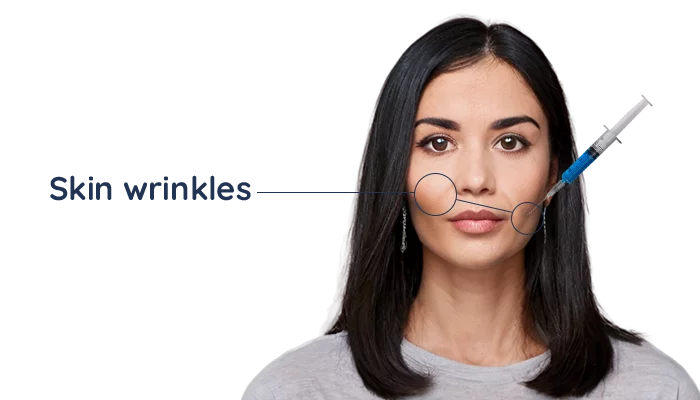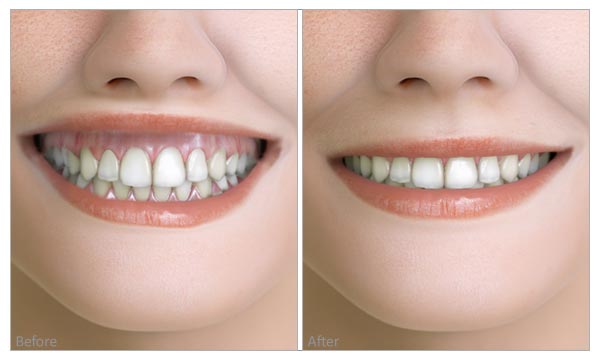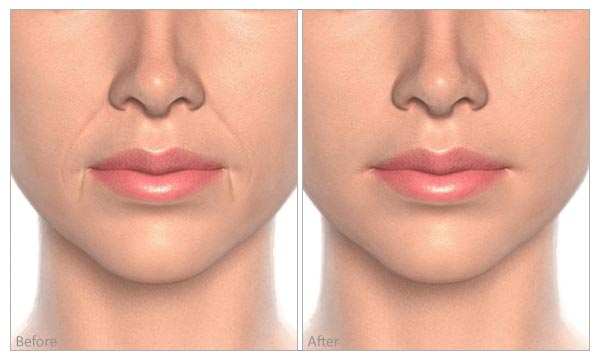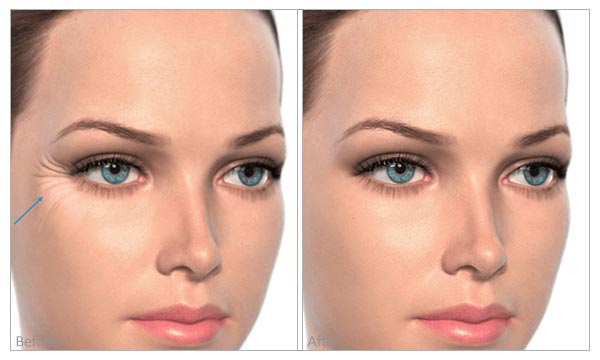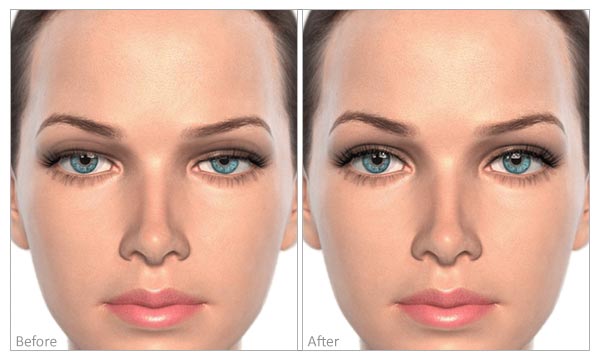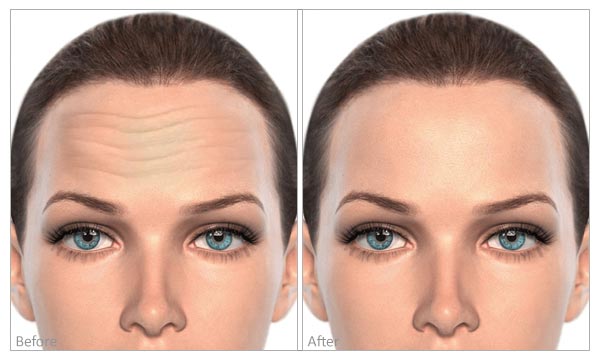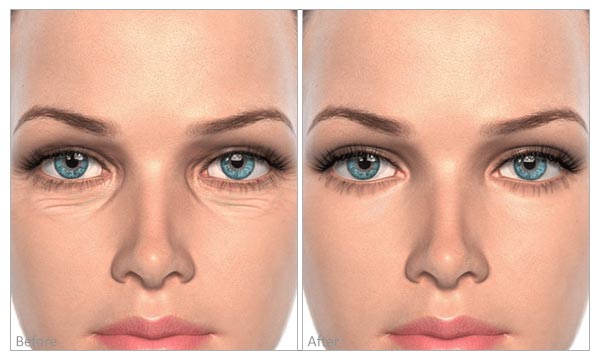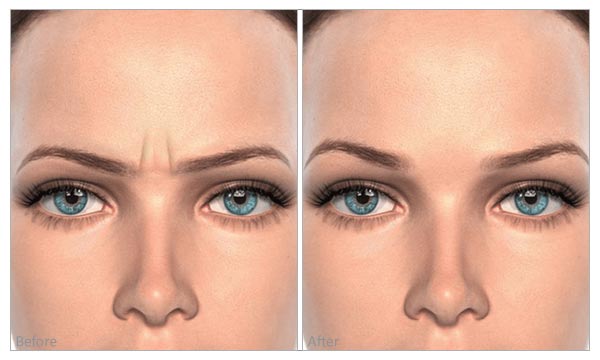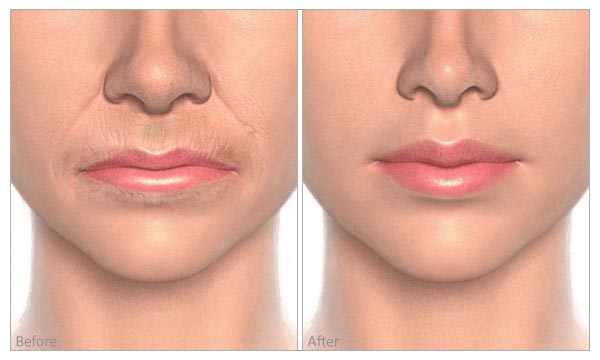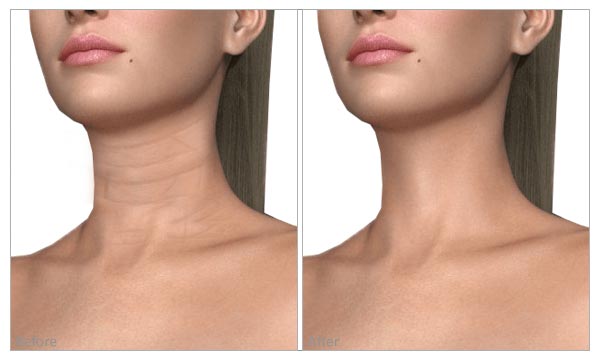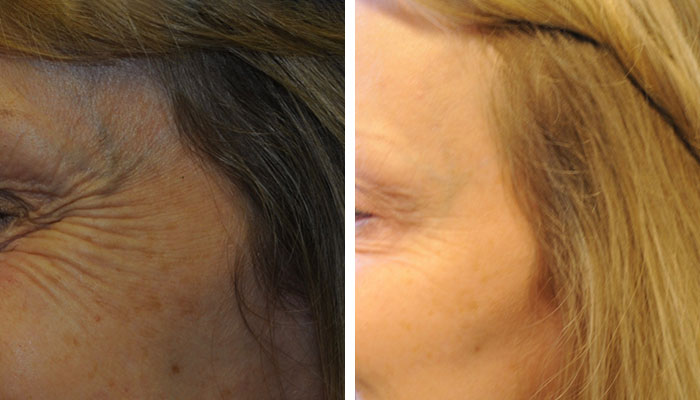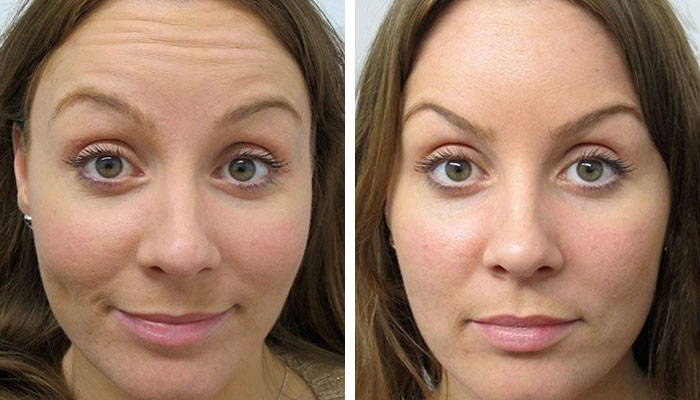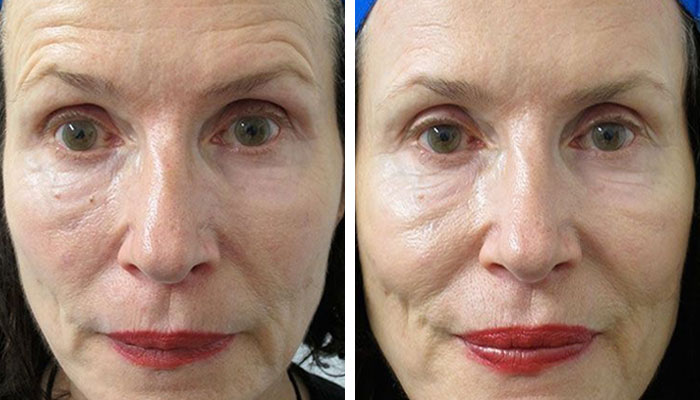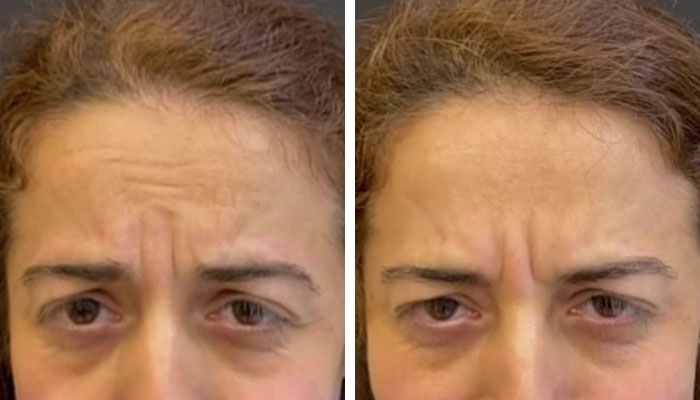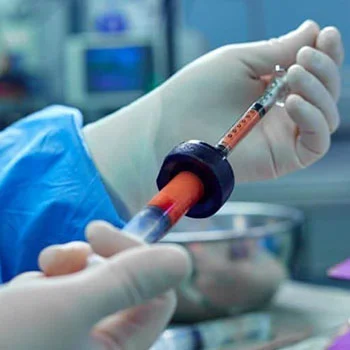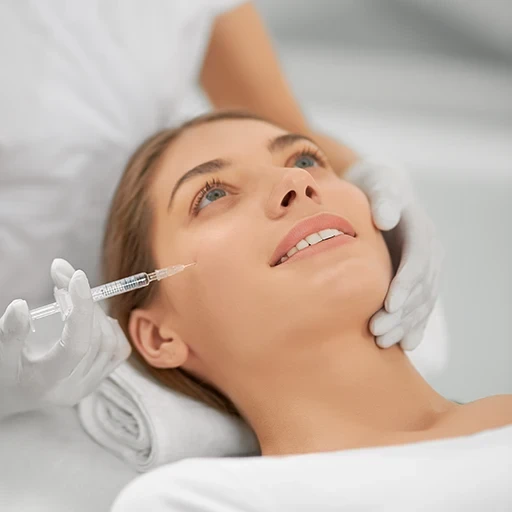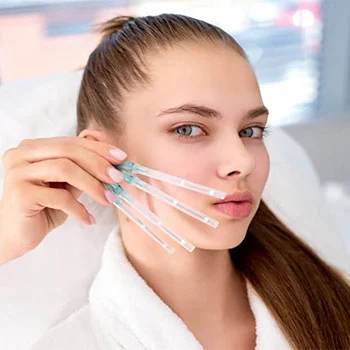What is Botox?
Botox is a brand name for a type of medicine made from a type of neurotoxin called botulinum toxin (type A) that is produced by the bacterium Clostridium botulinum. Although this is the same toxin responsible for botulism, a type of food poisoning that attacks nerves and causes difficulty breathing or paralysis, the injection of small doses of this toxic protein in certain areas of the body has aesthetic and therapeutic benefits.
Today, this botulinum toxin is commercially used in the medicine and cosmetic industry under different brands such as Botox, Dysport, Xeomin, Jeuveau, and Myobloc but many people refer to all of them as simply Botox because it is the first and best-known brand for this product.
Botulinum toxin
Botox is made from botulinum toxin type A. There are eight serotypes of botulinum toxin protein (A, B, Cα, Cβ, D, E, F, and G), of which serotype A has the most application in cosmetic medicine.
In 1953, a physiologist named Vernon Brooks found out that injecting small amounts of botulinum toxin type A can block the release of acetylcholine, causing temporary muscle relaxation.
Later in the 1960s, Alan Scot, an American ophthalmologist, suggested that the muscle-relaxing effects of Botox can help in the treatment of strabismus (crossed-eyes). It took him until 1978 to win the approval of the FDA to try the treatment on human volunteers.
In 1989, the FDA finally approved the injection of botulinum toxin type A for the treatment of both strabismus and blepharospasm (eye twitching), a condition involving the involuntary, spontaneous contraction of eyelid muscles, causing the person to blink their eyes involuntarily. With the success of the botulinum toxin in treating eye muscle disorders, the American pharmaceutical company Allergan started marketing the drug under the brand name Botox.
Having proven successful under clinical trials as a treatment for facial lines and wrinkles, Botox won the approval of the FDA in 2002 to be used to treat moderate to severe frown lines in adults, albeit under the brand name Botox Cosmetic to distinguish it from the one that can be used for therapeutic purposes.
Nowadays Botox is regarded as the best treatment for facial wrinkles. Although other pharmaceutical companies developed similar products under different names, including Dysport, Xeomin, Jeuveau, and Myobloc, many people still use the word Botox to refer to all of them.
How Botox works
As a cosmetic procedure, Botox injection involves injecting small amounts of botulinum toxin into certain muscles. This blocks some nerve signals, especially those that cause muscles to contract, causing the muscles to temporarily relax.
As facial creases and lines usually form as a result of facial expressions (hence the term ‘expression lines’), the relaxation of facial muscles prevents the formation of dynamic wrinkles, which are the wrinkles that form when you wear facial expressions. Botox injection can also soften static lines. These are deeper wrinkles that have formed on the skin over time and are present even when the facial muscles are relaxed but become more noticeable with facial expressions.
What are the uses of Botox injection?
Botox injection has both cosmetic and therapeutic uses and the method of injection, dosage, and frequency varies according to your condition and response.
However, it is most effective for reducing the signs of aging for which it is injected intramuscularly to reduce muscle contractions mostly for:
- frown lines or glabellar lines (vertical lines between the eyebrows)
- horizontal lines on the forehead
- crow’s feet (wrinkles around the eyes)
- bunny lines (lines that appear on the sides of the nose when you wrinkle your nose)
- Smile lines or nasolabial folds (lines that run down from the sides of the nose)
- radial lip lines or smoker’s lines (vertical lines on and around the lips)
- marionette lines or melomental folds (verticals lines that run down from the corners of the mouth)
- gummy smile
- chin line
The treatment is approved by the FDA mainly for the upper one-third of the face but some people request off-label application for other areas as well.
Overall, Botox offers dramatic results in treating dynamic wrinkles which are visible during muscle contraction and facial expressions such as smiling and frowning compared to static wrinkles that are seen at the time of rest. The static lines might require 2 to 3 consecutive injections to see major improvements specifically on deep lines.
The therapeutic application is also approved by the FDA for a range of conditions including:
- Muscle spasticity, a condition in which muscles stiffen and become tight, causing pain and discomfort. Cerebral Palsy is a good example that causes limbs to pull in toward the center due to neurological dysfunction. Botox can prevent such contractions.
- Cervical dystonia or neck spasms in which neck muscles contract involuntarily, pulling the head into an uncomfortable position. Botox injection relaxes the neck, preventing involuntarily twists and turns.
- Hyperhidrosis or excessive sweating in which the body sweats without hot temperature or self-exerting. In this case, the injection is done intradermally into the palms or soles to regulate sweating.
- Hypersalivation in which saliva production is excessive. The injection is performed into salivary glands to regulate sweat production.
- Bladder dysfunction in which an overactive bladder causes urinary incontinence. The injection is done into the bladder to regulate contractions.
- Strabismus or crossed eye in which a muscle imbalance disturbs the positioning of the eyes. Botox injection helps the eyes maintain a central position which is essential for vision and facial beauty.
- Blepharospasm or excessive blinking in which eye twitching is not under control. Botox injection will reduce the contraction and regulate the blinking.
- Chronic migraines in which headaches are experienced for more than half a month. The treatment reduces the frequency of headaches.
Some other health issues may also benefit from off-label Botox injections which include the following:
- Facial redness specifically during menopause, scars from wound healing, blistering lesions, skin inflammation, and achalasia that make swallowing difficult.
What to expect from your Botox injection?
In the initial consultation before Botox injection for cosmetic purposes, the doctor will explain and prioritize the main areas of concern on your face. The possible outcome and complications are also discussed. Photographic documentation is done before and after the procedure for better evaluation. In therapeutic cases, all medical tests and histories are assessed to create the best possible treatment plan.
You are strongly advised to discuss any health conditions you have and any medications you take with your doctor since some drugs such as muscle relaxants, blood thinners, allergy medications, and sleeping aids can interfere with the treatment. You might be advised to discontinue aspirin and some dietary supplements that have anticoagulant effects two weeks before treatment. You should also tell your doctor if you had a Botox injection within the past 4 months.
During the procedure, you don't often feel discomfort but local anesthesia might be used to numb the skin, especially in palms and soles that are being treated for excessive sweating. Ice and vibration are common methods to calm the skin.
The botulinum toxin comes in powder form and is diluted with saline in the ratio of 1 to 4 mL per 100-unit vial before being injected by a thin 30-gauge, 1-inch needle in less than 1 mL doses. You might be asked to frown to identify the targeted muscle. The number of injections is determined by the size of the area being treated and the type of product. On average, a Botox injection treatment takes less than 30 minutes to be performed.
After the injection, you can resume your daily activities unless advised otherwise by your doctor. You should avoid rubbing or massaging the treated area for 24 hours to prevent the spreading of the toxin to other areas. Application of heat or performing activities that cause flushing such as heavy exercise, hot tub bath, and alcohol consumption are also better to be avoided after injection. In case you experience dizziness or blurred vision, avoid driving and any activity that requires alertness.
Who is a good candidate for Botox?
Botox injection is not recommended for pregnant or breastfeeding women. People with neuromuscular diseases, keloidal scarring, and body dysmorphic disorder are not good candidates. Having dermatoses such as psoriasis and eczema at the site of injection or the presence of infection and gross motor weakness such as Bell’s palsy might interfere with the treatment.
Immuno-compromised people might experience different symptoms. Some people might develop antibodies after injection which makes the treatment ineffective. Actors and singers might have professional difficulties because they need their facial expressions to perform their job.
Some constituents of products such as cow's milk protein in Dysport (abobotulinumtoxinA) might also cause a problem for those who are allergic. The brands also use albumin, which is derived from human blood and rarely might cause infection.
If you are to have any surgical or dental procedures, tell your doctor about your Botox treatment.
When to start Botox injection?
Preventative Botox is best to be started in your 20s since the aging lines have not been formed yet and by stopping the facial contraction, the wrinkles never form.
However, it is never too late to start Botox injection even if fine lines have appeared. The treatment will freeze the muscles and by not letting them move, the wrinkles won't be visible. It also prevents them from becoming deeper.
What are the benefits of Botox injection?
Botox injection is a safe and effective procedure if performed by a certified practitioner. The benefits are enormous compared to other options such as dermal fillers that just add volume to the skin.
Some of the advantages of Botox include:
- Creating a youthful look
- Preventing the formation of wrinkles
- Stopping the fine lines from becoming deeper and more visible
- Effectively treating some unpleasant health conditions
- Being a non-invasive and safe procedure
- Being a very quick procedure
- Delivering fast results
- Having no major symptoms
- No downtime and preparation
- Cost-effectiveness
Side effects of Botox
Botox also has some risks that are rare and often mild. The potential side effects and complications of Botox include:
- Mild pain and swelling around the injection site
- Infection at the site of injection
- Toxin spreading to other areas
If any of the symptoms occur, consult your doctor.
How much does Botox injection cost?
The price of Botox injection depends on many factors such as the purpose of the treatment (being therapeutic or cosmetic). The extent of the skills and experience of the board-certified plastic surgeon is also highly influential as is the location.
The number of Botox units also is a big factor in the total cost. On average, 30-40 units are injected into the forehead and eye area. Each unit of Botox costs around $10 to $15 in the United States making the total cost between $300 to $600. in the UK, prices are slightly higher especially compared to other European countries. But in countries like Turkey, Iran, India, Mexico, and Thailand, a Botox injection procedure is much more cost-effective.
The therapeutic Botox procedures prescribed by a doctor often have insurance coverage but you should make sure before arranging the appointment.
How long does it take for Botox to work?
The result of a Botox injection will be visible after a couple of days, reaching full effect in 2 weeks. It will last between 3 to 12 months depending on the treated area. Follow-up injections are necessary to maintain the result. For crows' feet or frown lines, the treatment should be repeated every 4 to 6 months. But after multiple visits, botulinum toxin effects may be prolonged and injection frequency can be extended beyond this time.
Closing thoughts
Botox injection is the leading non-surgical cosmetic procedure in the world due to the benefits it has for aging signs such as wrinkles and fine lines. It is a safe procedure that is performed in a very short time without any major symptoms or need for preparation and recovery. The results are quickly visible and last 3 to 12 months depending on the type of treatment.
It is best to be started in your 20s to prevent the formation of the expression lines but even after the wrinkles are visible, you can use Botox injection to hide them or stop them from becoming deeper.
Botox injection is an effective procedure but only an experienced board-certified cosmetic surgeon can deliver your desired result, making you look younger. Your reasonable expectations also will lead to more satisfaction, which is the ultimate goal.

